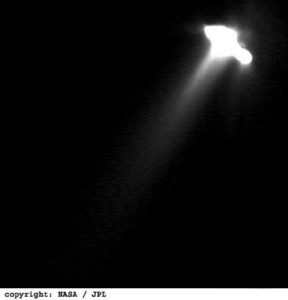CUBA: Myths and Legends, “LA LUZ DE YARA” .
The Cuban farmers have been given to create fables from time immemorial, forging a campirana mythology of countless stories that stand between the lights on roads and cemeteries. Rare is the farmer who does not have a story about a light that appeared to him one night as he rode toward home, when passing a cemetery, or next to a ceiba tree or a palm.
Myth Light Yara
One of the most famous of these legends is called “Luz de Yara”, this is one of the most famous legends throughout eastern Cuba, related to the aboriginal past.
Is reflected in Cuban literature of the nineteenth century, more than one version, and is based on the historical fact of death of the famous cacique Hatuey a burning fire in 1501, in the region where is located Baracoa, the first village founded by Spaniards in the country.
Legend has it that a faint, mysterious light, detached from the immense fire of sacrifice, wanders at night ……… ..
It is the soul of Hatuey.
Some versions of the Light of Yara:
It begins as a reflection on the sea and breaks into a thousand pieces, but if a person grates a gold ring on the reefs, “going up”.
They say that the soul of Hatuey, the Spanish claimed the gold that was brought to Cuba. It is said that a native girl named Yara, hugged Hatuey at the time of execution and burned his flesh sprang the light takes centuries touring the region.
Around the easternmost Cuban cities are many residents who talk about stories related to Luz de Yara. Who has not seen it and knows of a relative who met her and speaks of the encounter as if seeing him. It seems that these stories passed down from generation to generation and are now inseparable part of the family mythology itself.
From the anecdote of Guillermo Cabrera Infante:
General Fulgencio Batista, told Gaston Baquero (countryman, friend and advisory board member) that owed the success of his coup on March 10, 1952 to the “light of Yara”.
Baquero tells:
“At army headquarters at Camp Columbia it was entered by one of the closely guarded doors. Batista suddenly decided on the post 6, wherein the sentry on duty did not know the military conspiracy. Batista, wearing the jacket he wore in all its dangerous occurrences, his pocket pistol “with a bullet in the direct”. Upon entering the post the sentry could not see it because it protected and made invisible light of Yara. ”
Light Yara / Maggie GuatyMarrero / Internet Photos / TheCubanHistory.com
THE CUBAN HISTORY / HOLLYWOOD.
ARNOLDO VARONA, EDITOR.
CUBA: MITOS Y LEYENDAS, “LA LUZ DE YARA”.
Los guajiros cubanos han sido muy dados a crear fábulas desde tiempos inmemoriales, forjando una mitología campirana de innumerables historias entre la que se destacan las luces en caminos y cementerios. Es raro el campesino que no tenga un cuento sobre una luz que se le presentó una noche mientras cabalgaba hacia su casa, al pasar frente a un cementerio, o junto a una ceiba, o una palma.
El mito de la luz de Yara
Una de las más famosas de estas leyendas es la llamada “Luz de Yara”, esta es una de las leyendas más conocidas en todo el Oriente cubano, relacionada con el pasado aborigen.
Aparece reflejada en la literatura cubana del siglo XIX, en más de una versión, y se basa en el hecho histórico de la muerte del célebre cacique Hatuey en una hoguera ardiente, en 1501, en la región donde se encuentra Baracoa, primera villa fundada por los españoles en el país.
Cuenta la leyenda que una tenue y misteriosa luz, desprendida de la inmensa hoguera del sacrificio, vaga errante por las noches………..
Es el alma de Hatuey.
Algunas versiones sobre la Luz de Yara:
Comienza como un reflejo sobre el mar y se rompe en mil pedazos, pero si una persona ralla un anillo de oro en los arrecifes, “le va para arriba”.
Cuentan que el alma de Hatuey, reclama a los españoles el oro que se llevaron de Cuba. Se dice que una muchacha nativa, llamada Yara, se abrazó a Hatuey en el momento del suplicio y de su carne incendiada brotó la luz que lleva siglos recorriendo la comarca.
En los alrededores de la más oriental de las ciudades cubanas quedan muchos residentes que conversan sobre historias relacionadas con la Luz de Yara. Quien no la ha visto, sabe de un familiar que se encontró con ella y habla del encuentro como si lo viera. Todo parece indicar que esas narraciones han pasado de generación en generación y forman ya parte inseparable de la propia mitología familiar.
Anécdota de Guillermo Cabrera Infante:
El General Fulgencio Batista, le contó a Gastón Baquero (coterráneo, amigo y consejero consultivo) que debía el éxito de su golpe de Estado del 10 de marzo de 1952 a la “luz de Yara”.
Baquero narra:
“Al cuartel general del ejército en el campamento de Columbia se entraba por una de las puertas estrechamente vigiladas. De pronto Batista se decidió por la posta 6, donde el centinela de guardia no sabía de la conspiración militar. Batista, vistiendo el jacket que se ponía en todas sus apariciones peligrosas, llevaba en el bolsillo su pistola “con una bala en el directo”. Al entrar por la posta el centinela no pudo verlo porque lo protegía y hacía invisible la luz de Yara”.
La luz de Yara/Maggie GuatyMarrero/Internet Photos/TheCubanHistory.com
THE CUBAN HISTORY/ HOLLYWOOD.
ARNOLDO VARONA, EDITOR.






